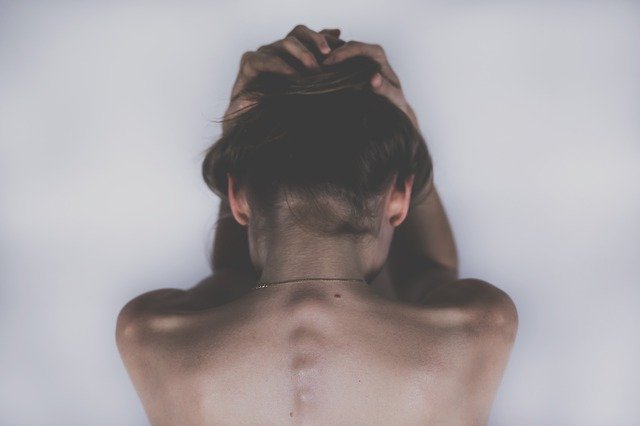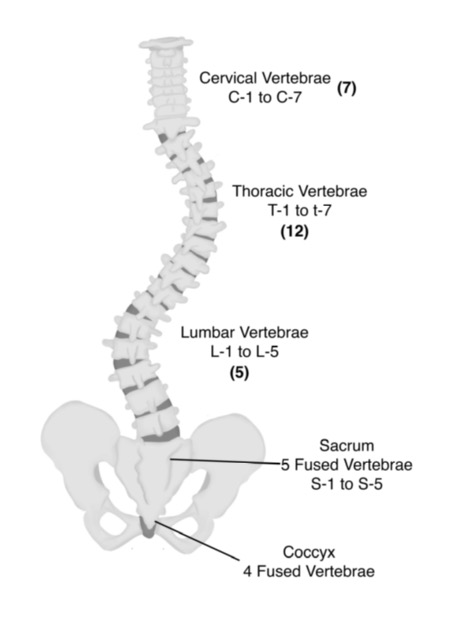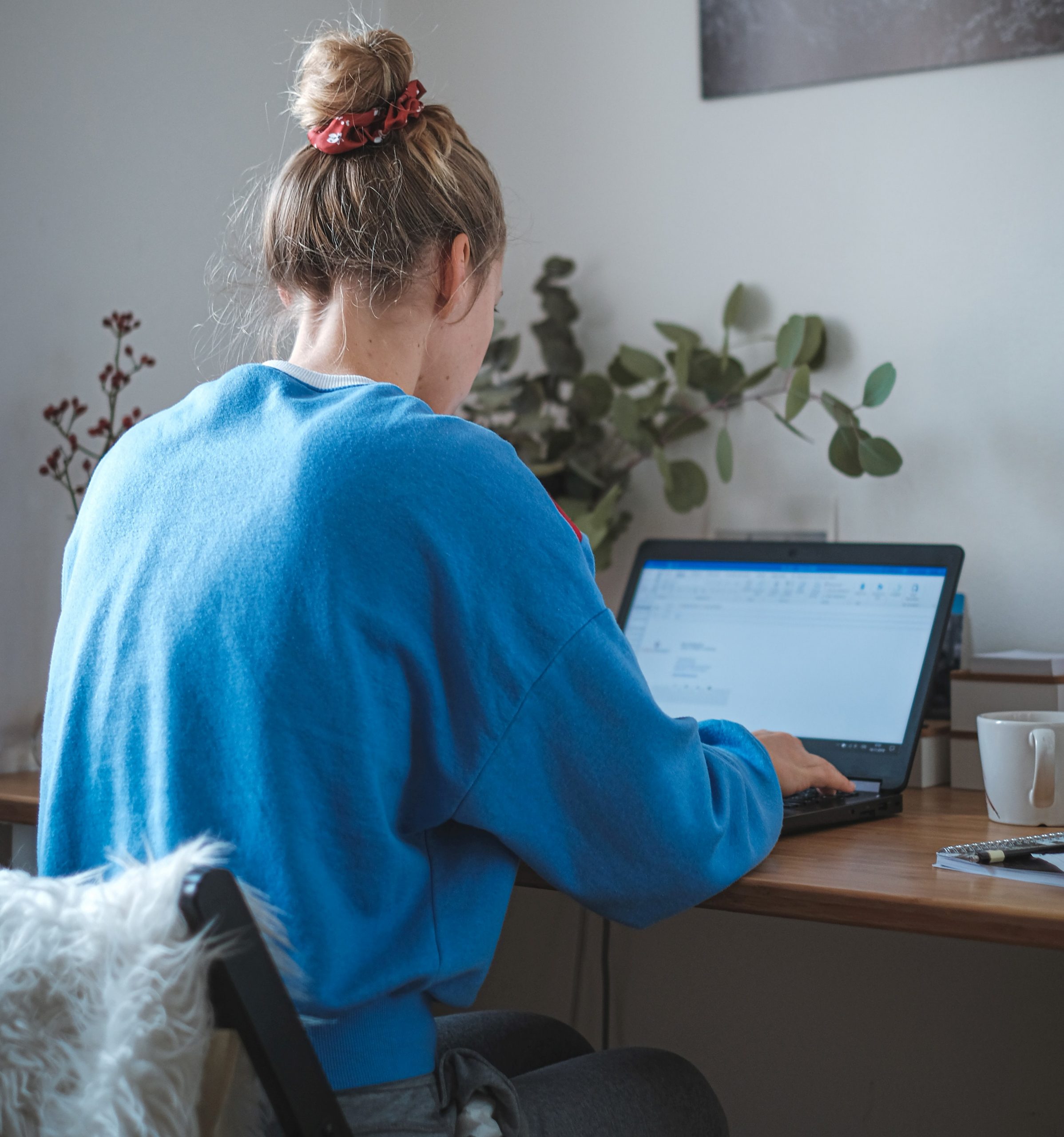
Written by Caroline Freedman, author of The Scoliosis Handbook
Depending on whether you are working or running around the house cleaning, our daily routines have changed dramatically. My Personal Training classes, like many people’s work, have all changed to Zoom or FaceTime. I am not moving around as much as I used to. Usually I am demonstrating and then walking around a client checking their posture and positioning, now I am sitting on my exercise ball closely watching the screen to check the exercises are being done correctly. My clients say they are working harder than ever but what about me? After the first week, I found I was stiffening up quite a lot, after three Zoom sessions, my legs and glutes went to sleep and cramped. The same problem applies if I am sitting writing. Speaking to clients, the huge change for many people working from home is that they tend to sit for hours in one position once they have got into deep concentration and have become focused. Time also appears to just run away so it is easy to eventually glance at the time and realise most of the day has just disappeared and you still need to fit in cleaning, the washing, shopping, some voluntary work, cooking and…exercise….and don’t forget socialising on HouseParty to catch up with your friends. I also cannot visit my physiotherapist or book a home visit massage.
I have found the following changes to my day have really made a difference since the first two weeks of lockdown.
SITTING/WORKING/WATCHING TV/LAPTOP etc
Set an alarm on your phone to remind you to get up and walk around and do some stretches. Keep hydrated and if you have a garden, get some air.
CLEANING
I found that I was using my right arm to clean which is the same side as my curve. Using one side repeatedly can result in an imbalance of the muscle build up, especially if you are cleaning every day. One night I woke up with a spasm on the right side of my spine. After a few stretches to release the back muscle (Lats) I was fine. I have switched arms to do the cleaning. Yes, it does feel a bit weird at first but I found I became used to it quite quickly, with the exception of ironing, which I am definitely not bothering with. Mopping for example, use your weaker side to do the work. Anything heavy – like lifting the vacuum up the stairs – ask someone else to help you if they are around. Try and delegate jobs. Note: if you run the home this can be a challenge and that whole discussion is probably for another blog!
EXERCISE
Schedule that walk into your day and don’t miss it out. Some fresh air and change of scenery does wonders for your mental health and I find I always come back home feeling calm and happy. I also make sure I train every day. You will find exercises in The Scoliosis Handbook that can be done at home. I have floor exercises in my book you can do without the need for gym equipment. Many of the equipment suppliers have run out, so for bands, replace them with tights or leggings and for weights, find some tins, bottles of water, books, bags filled with packets of rice/pasta. There is also an abundance of exercise classes available online. With scoliosis or any person with back issues you have to be careful. I have found that @yogaberry.scoliosis is really good to follow. She is on YouTube with some free downloads or you can book into one of her Zoom classes. I am offering one-on-one Personal Training sessions on Zoom for 30 minutes or 1 hour. Please do get in touch if you would like to train with me.
MISSING YOUR PHYSIOTHERAPIST/MASSAGE?
Many scoliosis or back pain patients usually try to keep up regular visits. If you have recently had surgery you may still be visiting your physiotherapist as part of your recovery. Below are some stretches that may help you feel better. You can also try ordering a spiky massage ball to roll up and down against a wall. They are around £5. For tired muscles try and order some magnesium salts to put in a hot bath. I find these salts are really great at easing aching muscles. I find stretching really helps me.
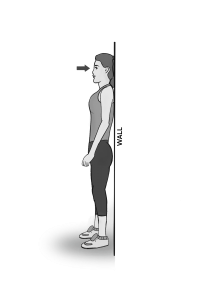 STANDING NECK PUSH AGAINST WALL (a John Rutherford physiotherapist exercise backpainspecialistslondon.co.uk)
STANDING NECK PUSH AGAINST WALL (a John Rutherford physiotherapist exercise backpainspecialistslondon.co.uk)
This movement could come under exercises OR stretching depending on how slowly it is done. I recommend super slow.
It works the neck muscles and helps with strengthening the neck and improving posture.
- Stand with your back to the wall and your knees slightly bent.
- Gently push your head back using your neck muscles to try to touch the wall at eye level.
- Make the push a very small movement towards the wall making sure your chin is tucked slightly in, hold for a few seconds, then relax.
- Repeat the pushes six times and build to 10 repetitions x 3 sets.
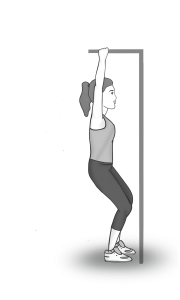 HAND HANGING
HAND HANGING
I find this stretch a great relief.
- Find a high bar or top of a door you can just reach.
- Hold with both hands. Bend your knees and try to sit, so you are dropping your spine downwards. Do not arch your back, but suck your abs in.
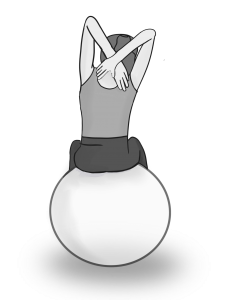 SEATED OBLIQUE STRETCH (a John Rutherford exercise)
SEATED OBLIQUE STRETCH (a John Rutherford exercise)
This movement offers excellent release.
- Sit on a chair, bench or Swiss ball (see the Scoliosis Handbook for guidance) with your knees at a 90° angle.
- Cross your arms above your head with your hands on opposite shoulders.
- Really try to sit up as tall as you can.
- Move gently from one side to the other, lifting your hips off the chair alternately.
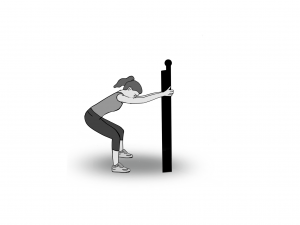 BANISTER STRETCH
BANISTER STRETCH
This is my all-time favourite stretch. It is my go-to stretch for any client who walks into my studio complaining that they have ‘done something’ to their back, or when I just want a lovely waking-up stretch.
If you sit at a desk for work, the banister stretch is great for pulling out a compressed
spine, opening up your vertebrae.
- Find a banister or fixed pole.
- Feet one and a half hip width apart
- Grip with your hands and squat down and outwards.
- Keep your back flat, head in line with your body, core sucked in.
- Do not arch your back.
- Imagine someone is pulling your hips towards the back of the room. Sit further down to get a deeper spinal stretch.
- Hold for a few seconds up to 60, and repeat.
Always check with your doctor/physio that these exercises are safe for you.
Illustrations by: Dunelm Digital – www.dunelmdigital.co.uk

